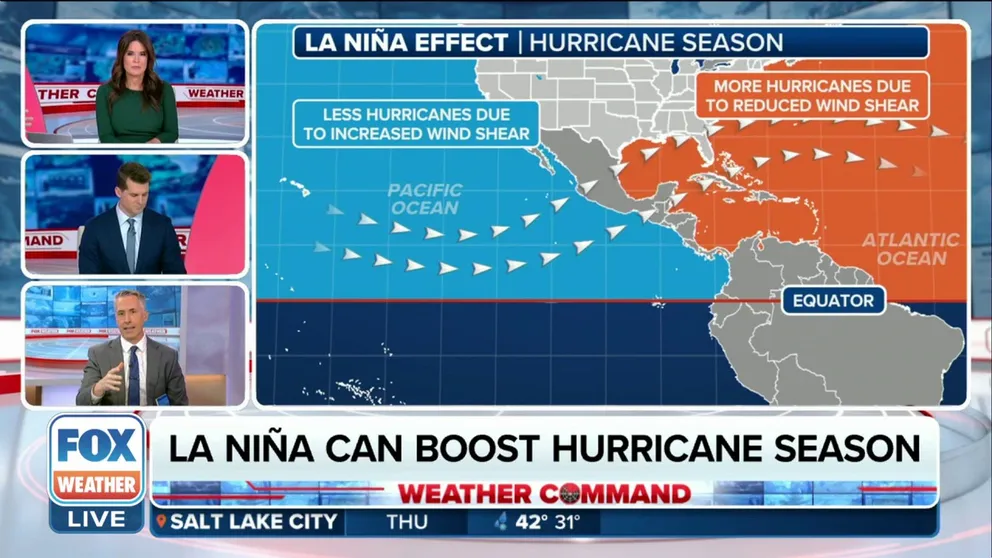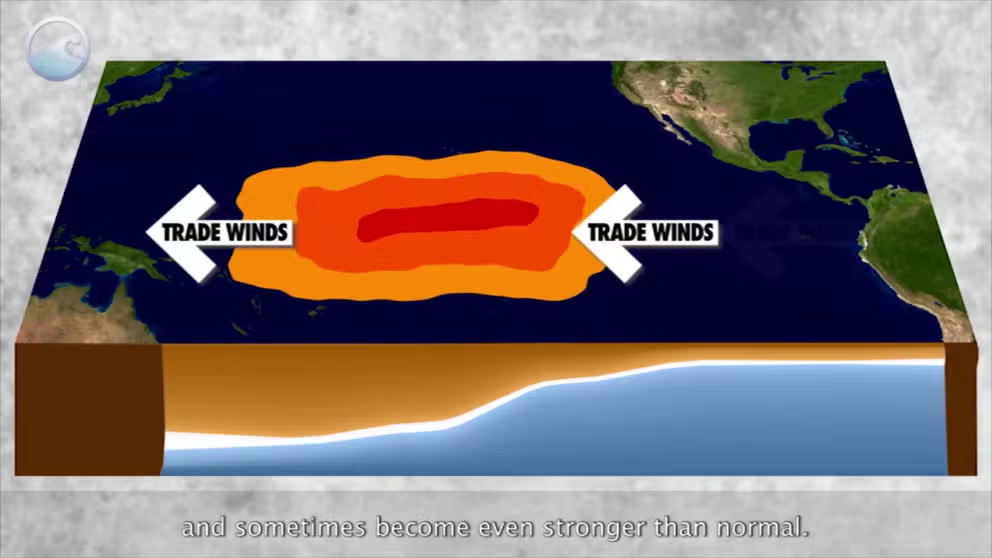El Nino continues fading as opposite La Nina looms for summer
Odds have increased again for La Niña conditions to take over the tropical Pacific Ocean this summer, and that could add fuel to the Atlantic hurricane season already dealing with persistent well-above-average water temperatures.
El Nino forecast to quickly fade this spring and be replaced by La Nina
The current El Nino just reached 'Super' El Nino status - for only the 6th time since 1950. But forecasts now show El Nino is about to quickly fizzle out, and likely replaced by La Nina by the summer.
SILVER SPRINGS, Md. – El Niño is still clinging to life in the tropical Pacific Ocean, but it’s losing its grip on the Earth’s weather patterns and is forecast to be vanquished soon – perhaps as early as next month.
Recent sea-surface temperature measurements in a section of the central Pacific Ocean where El Niño is measured dropped to 1.4 degrees Celsius (2.5 degrees Fahrenheit) above average in February after peaking at 2 degrees Celsius (3.6 degrees F) earlier this winter. That had pushed the event’s standing into "super El Niño" status – just the sixth time since measurements began in 1950.
Not only are the waters continuing to cool, but surface temperature measurements encompassing a wider swath of the ocean have even dipped slightly below average, according to NOAA’s latest El Niño update released Thursday.
Climate prediction forecasts indicate sea-surface temperatures in the central Pacific will continue to cool over the next several weeks, with now an 83% chance of the Pacific dropping below El Niño status into neutral phase – when the ocean is within 0.5 degrees C (0.9 degrees F) of average – in April.
The meaning of El Nino and La Nina
The status of whether the world is being impacted by an El Nino or a La Nina is determined by water temperatures in the central and eastern Pacific. (NOAA)
NEUTRAL PHASE: WHEN EL NIÑO AND LA NIÑA ARE NO LONGER IN CONTROL
The cooling is not expected to stop at neutral status. Latest forecasts have increased the odds further that the Pacific will return to El Niño’s opposite pattern of La Niña by summer. There is now a 62% chance of La Niña conditions by June and a 75% chance La Niña will be present by the heart of summer, according to NOAA.
The U.S. just came out of a rare "triple dip" La Niña in the winters of 2020-21 through 2022-23 before boomeranging into the strong El Niño this winter. The La Niña phase typically correlates to dry weather in the southern U.S. and cooler, wetter weather in the Pacific Northwest and parts of the North.
It would be the opposite of what we’ve generally seen this past winter.
California took the brunt of several storms – many of them atmospheric river storms – leaving much of the state well above average for precipitation.
As the strong Pacific jet stream persistently hugged the South, several rainstorms have pushed through Texas and the Gulf Coast. Florida suffered through one of its cloudiest December-January periods on record, according to data from Alaska climatologist Brian Brettschneider.
Meanwhile, aside from a strong polar-vortex-fed arctic outbreak in mid-January, it's been a very mild winter across the nation's northern tier. Minneapolis has a scant 14 inches of seasonal snow – nearly 30 inches below average – and people have been playing golf and installing swimming pools during the winter in a region more well-known for subzero temperatures and snowstorms.
La Niña could help fuel active hurricane season in Atlantic
In addition, La Niña patterns tend to enhance the Atlantic hurricane season – a worrying trend when combined with the monthslong streak of record overall ocean warmth across the Atlantic Ocean.
WHAT RECORD-SETTING OCEAN TEMPS MEAN FOR SEA LIFE AND THE 2024 HURRICANE SEASON
Rare 'Super El Nino' forecast to give way to La Nina
Climate scientist Tom DiLiberto explains how a La Nina could produce a more active hurricane season. Feb. 9, 2024.
"If the water in the box east of the International Dateline and south of Hawaii is persistently significantly below 0.5 degrees Celsius (0.9 degrees F), research has shown that more hurricanes develop (in the Atlantic)," FOX Weather Hurricane Specialist Bryan Norcross said. "Cold water in the Pacific Ocean tends to create upper winds across the Atlantic that are more conducive to storm development."
NOAA's next overall update on the status of El Niño will come on April 11.


